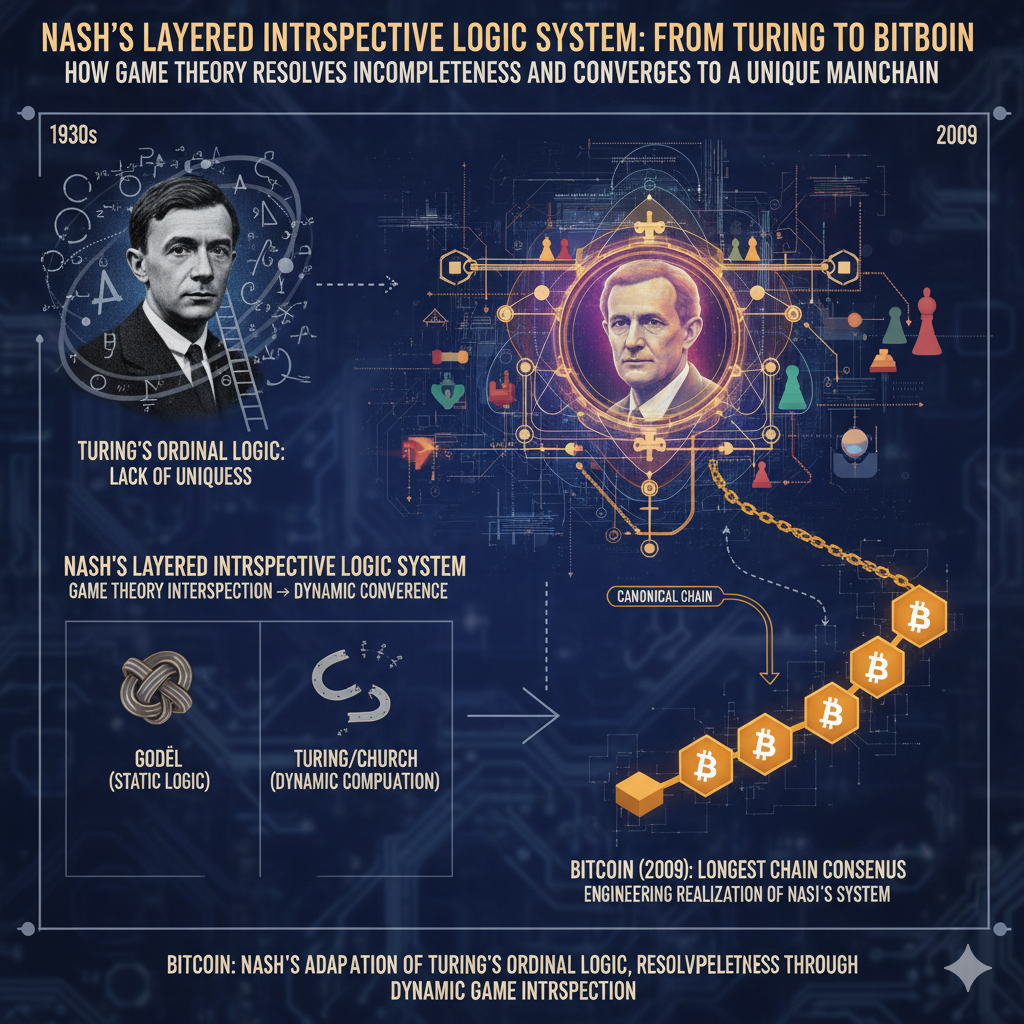How to resolve incompleteness in games and converge to a unique main chain
I. Turing’s Ordinal Logic System and Its Dilemma
In the 1930s, Turing proposed the ordinal logic system in his doctoral thesis, attempting to break through Gödel’s incompleteness via transfinite iteration.
The core idea of this system was: when a formal system cannot prove itself, higher-order rules can be introduced to continuously extend the system’s logical capacity.
However, Turing’s ordinal logic system had obvious problems:
- Lack of uniqueness: anyone could construct their own transfinite sequence.
- Inability to form consensus: there was no recognized “unique main chain.”
- No recursive convergence: the system could not stabilize to a definite solution.
As a result, although Turing’s ordinal logic system had theoretical depth, it could not serve as a deterministic consensus mechanism in practice.
II. Nash’s Transformation: The Layered Introspective Logic System
By the 1990s, Nash introduced a game-theoretic introspective mechanism into the framework of ordinal logic.
His idea was: by designing Nash equilibria, the system would gain self-restraint and self-selection capabilities, thereby converging to a unique canonical ordinal chain.
Nash called this upgraded version the Layered Introspective Logic System.
- Still ordinal logic, but enhanced with “introspective games.”
- The system no longer relied on external judgment, but could automatically eliminate unstable solutions through internal games.
- Ultimately, it converged to a unique chain acceptable to all.
III. Relation to Gödel’s Two Types of Incompleteness
It is necessary to distinguish between two types of incompleteness:
- Gödel (1931): Incompleteness of static logic, arising from self-reference.
- Turing/Church (1936+): Undecidability of dynamic computation, arising from process.
- Nash’s contribution (1990s):
- By introducing an introspective mechanism into dynamic games, he eliminated the problem of global self-reference.
- This allowed the system to form internal completeness through evolution.
- Thus, it broke through the limitations of static logical incompleteness.
IV. Practical Implementation: Bitcoin’s Longest Chain Consensus
The design of Bitcoin (2009) is precisely the engineered realization of Nash’s “Layered Introspective Logic System”:
- Longest chain principle: corresponds to layered introspective logic.
- Competition of mining power: constitutes a dynamic game field.
- Fork elimination mechanism: automatically converges to a unique chain within equilibrium.
- Final outcome: the formation of a decentralized, globally recognized time order.
Therefore, Bitcoin is not simply a distributed ledger, but the real-world embodiment of Nash’s introspective game logic.
V. Conclusion
- Turing’s ordinal logic system → provided a framework for transfinite iteration, but lacked uniqueness.
- Nash’s Layered Introspective Logic System (1990s) → achieved dynamic convergence through game-theoretic introspection.
- Bitcoin (2009) → realized this in engineering practice, forming decentralized global consensus and time order.
In one sentence: Bitcoin is the real-world embodiment of Nash’s transformation of Turing’s ordinal logic system, solving the problem of incompleteness through dynamic game introspection.
